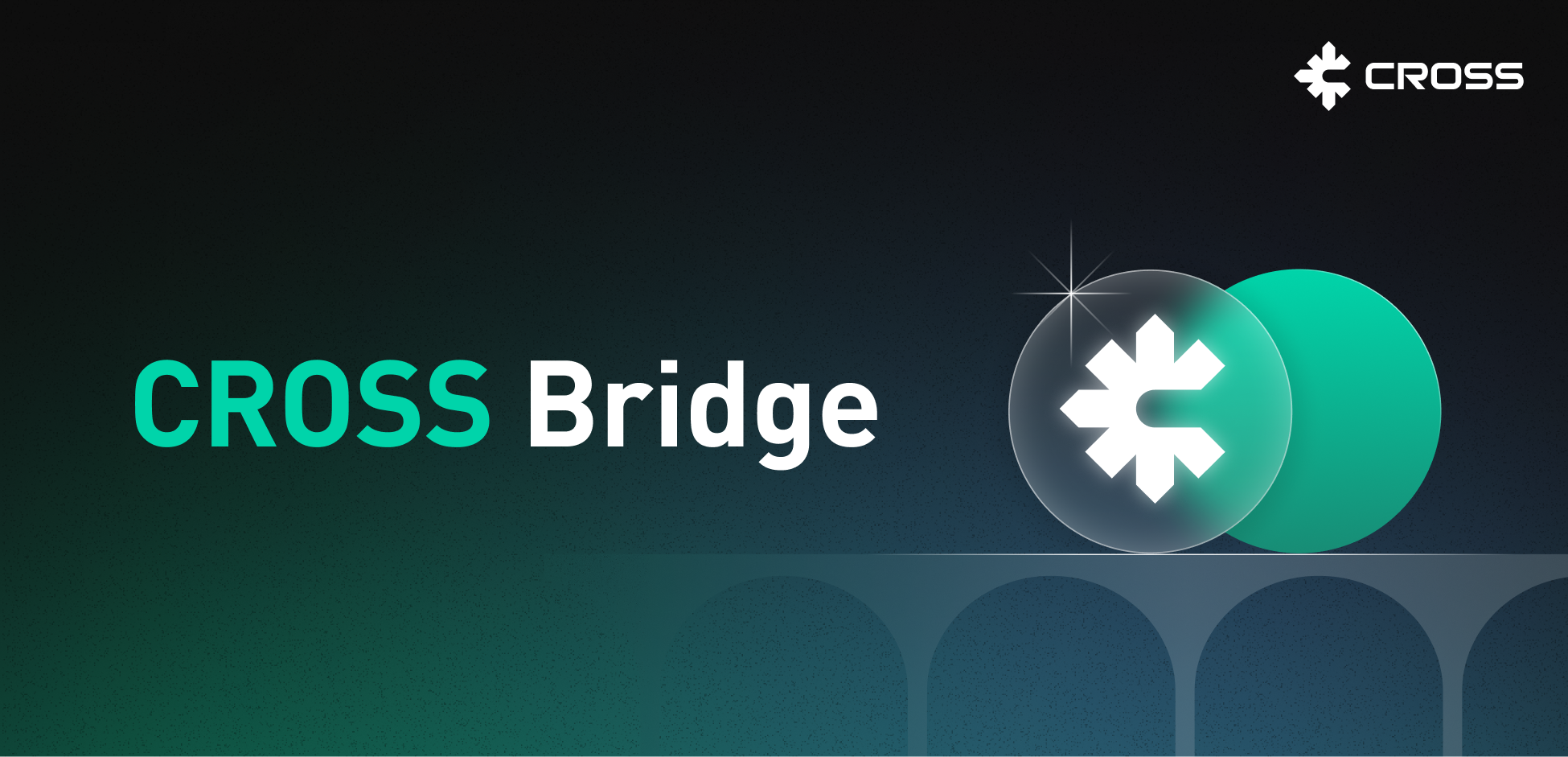BRIDGE in CROSS

Why Blockchain Bridges Matter
With the rise of L1 blockchains and L2 scaling solutions, more decentralized applications are adopting cross-chain architectures. As a result, cross-chain communication and asset transfers have become a critical part of network infrastructure, made possible through various types of blockchain bridges.
Why We Need Bridges
Bridges connect blockchain networks, enabling interoperability and communication between them. Blockchains typically operate in isolated environments and cannot naturally interact with other blockchains. This isolation limits broader innovation and activity.
Bridges solve this problem by forming pathways for token, message, arbitrary data, and even smart contract calls to travel between blockchains.
Benefits of Bridges
Bridges allow networks to exchange data and move assets, unlocking valuable use cases. Each blockchain has unique strengths, limitations, and development approaches (e.g., speed, scalability, cost). Bridges help leverage these innovations across the broader crypto ecosystem.
For developers, bridges enable:
- Cross-chain transfer of data, information, and assets
- Expansion of protocol design through interoperability
- Example: A yield farming protocol on Ethereum can offer liquidity pools across all EVM-compatible chains
- Deployment of dApps on rollups and sidechains to leverage lower fees
- Cross-ecosystem developer collaboration
- Access to broader user bases across blockchain communities
How Do Bridges Work?
While bridge designs vary, three core methods facilitate cross-chain asset transfers:
- Lock and Mint – Lock assets on the source chain and mint equivalent assets on the destination chain
- Burn and Mint – Burn assets on the source chain and mint new ones on the destination chain
- Atomic Swaps – Swap assets on one chain with a counterparty on another chain
Types of Bridges
Common bridge categories include:
- Native Bridges – Designed by specific blockchains for native liquidity movement (e.g., Arbitrum Bridge, Polygon PoS Bridge)
- Validator/Oracle-Based Bridges – Use external validator sets or oracles for cross-chain verification (e.g., Multichain, Across)
- Generalized Messaging Bridges – Transfer not just assets but also messages and arbitrary data across chains (e.g., Axelar, LayerZero)
- Liquidity Networks – Focus on atomic swaps without supporting complex messaging (e.g., Connext, Hop)
Key Trade-Offs to Consider
No bridge is perfect—each involves trade-offs. Developers and users should consider:
- Security – Who secures the system? Validator-based bridges can be less secure than those relying on native chain consensus
- Convenience – How long does the transaction take? How many signatures are required?
- Connectivity – How many destination chains are supported? How hard is it to integrate new ones?
- Data Transmission Capabilities – Does the bridge support message and data transfer, or only asset transfers?
- Cost Efficiency – What is the cost to bridge assets? Does it require capital to secure the protocol?
Trust-Based vs. Trustless Bridges
- Trust-Based Bridges – Rely on external validators or intermediaries. These are faster and more flexible but require trust.
- Trustless Bridges – Operate based on the underlying blockchain consensus. They offer higher security with no external trust assumptions.
Bridge Risks
Bridges account for three of the largest hacks in DeFi history and remain early-stage technology. Risks include:
- Smart Contract Bugs – Even audited bridges may contain exploitable flaws
- Systemic Financial Risk – Use of wrapped assets can introduce risks in the pegging mechanism
- Counterparty Risk – Trust-based models risk collusion or fraud by validators
- Operational Uncertainty – Bridges may behave unpredictably under congestion or network instability
How Can dApps Use Bridges?
Practical approaches for developers integrating bridges:
- Build a custom bridge – Complex and risky; requires top-tier security
- Provide multiple bridge options – Allow users to choose how they move assets
- Bridge integration – Seamlessly include bridge functions in the dApp
- Integrate multiple bridges – Support more ecosystems and assets
- Bridge aggregators – Manage multiple bridges via a single interface
While bridge integration offers significant benefits, it also poses technical and operational challenges for developers.
Updated about 2 months ago